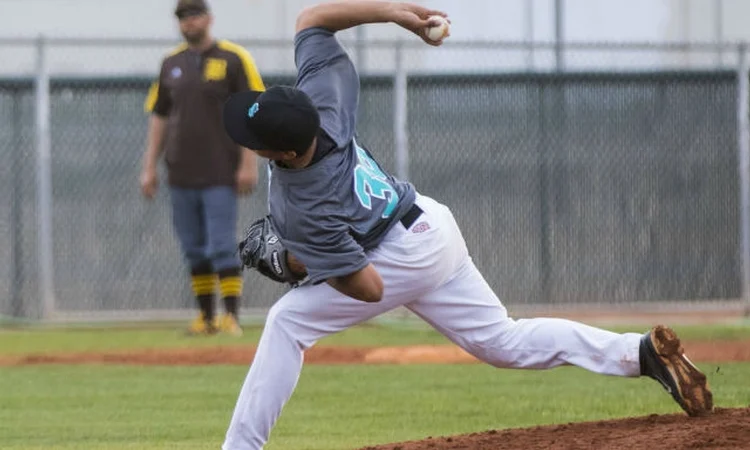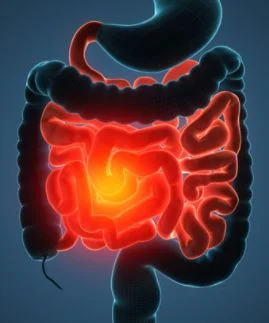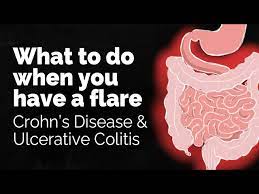A pitcher’s worst nightmare is hearing that they need to have Tommy John surgery. The surgery has an extremely long recovery period, and pitchers may not always return to their original pitching performance.
Thankfully, stem cell treatments are beginning to make a difference in helping to heal injuries that, in the past, would require Tommy John surgery. Some MLB players have even used stem cell therapy in hopes they could avoid Tommy John surgery. Before we get into how stem cells can help prevent Tommy John’s operation, it may be helpful to understand the history behind Tommy John’s surgery and what causes it.
Ulnar Collateral Ligament
The ulnar collateral ligament is a triangular band that runs on the inside of the elbow. The ligament stabilizes the elbow through various motions, such as throwing. Typical injuries range from minor inflammation to a full-blown tear, which requires Tommy John surgery.
During the throwing motion, the ulnar collateral ligament goes through an extreme amount of tension. When pitchers throw as hard as they can, the maximum tensile stress of the ligament is reached. Doing this every day for years can cause serious problems.
What Causes the Injury?
In baseball, the injury is caused by excessive throwing. Pitchers have been performing the same motion their entire life; it is no surprise that the ulnar collateral ligament begins to wear after thousands of baseball games.
Early childhood sports specialization is another significant cause of this injury. Children who play a variety of sports will develop muscles and will not overuse tendons and ligaments. There is a strong correlation between the number of pitches over time and an ulnar collateral ligament tear. There is only so much that the ligament can take before it tears.
History of Tommy John Surgery
Tommy John surgery was first performed back in 1974, on none other than Tommy John. The first time it was completed, it was extremely experimental, and there was no guarantee that he would ever be able to pitch again. Tommy John went on to have a very successful career after he underwent surgery. He played until he was 46 years old and won 164 more games.
The surgery is straightforward. A surgeon will go into a patient’s elbow and create space for the new tendon. The tendon is usually taken from the forearm but can be taken from several places in the patient’s body, such as an accessory hamstring. The cord is anchored onto the bones and then patients go through a rigorous rehab process.
The number of surgeries in teenagers is on the rise as sports become more and more competitive and because early specialization into one game, baseball. Nearly two-thirds of Tommy John surgeries are performed on teenagers. This epidemic does not appear to be slowing down anytime soon.
Granted, the success rate is high, at about 85% for the procedure. There are several issues that Tommy John surgery creates, even though it does help get pitchers back on the mound.
Problems that Tommy John Surgery Presents:
Decreased Pitching Performance
For the most part, a majority of pitchers will not be able to perform at the same level as before their injury. It makes sense, the original ulnar collateral ligament is going to be stronger than the new ligament. Pitchers will not be able to pitch as long or as hard for the most part.
A study found that only 53% of pitchers were back to their full playing potential after undergoing Tommy John surgery. And remember, most of these studies follow the most elite pitchers, with the absolute best rehabilitation anyone can receive. Having a 50/50 shot of returning to your original level of play has to be daunting for someone who uses their arm to make a living.
Force Transferred to Other Parts of the Body
Another issue that has been brought up is that many pitchers have trouble with their shoulders after Tommy John surgery. The stress and force that was absorbed by the original ulnar collateral ligament will now be transferred into the joint. Tommy John surgery may fix one problem, but it could rear its ugly head by creating another problem.
This is a common problem that happens with many back surgeries in particular. The original joint, muscle, or tendon does not carry the same weight that it used to. This creates a situation where other parts of your body have to overcompensate after surgery. This condition is called adjacent segment pathology.
Shortened Career
Tommy John’s surgery may help MLB pitchers return to the mound; however, many patients do not continue playing very long after their surgery. A study showed that the average MLB pitcher who underwent surgery pitched fewer than 100 games for the rest of their career.
That is a shockingly low number for a surgery that has such a high success rate. Catchers also have a significantly shorter career as well after Tommy John surgery. More or less, it has shown that players will perform worse and have a shorter job after Tommy John surgery.
Not only will players who undergo Tommy John surgery have a grim outlook on their career, but they also face a long road back to getting back on the mound.
Long Recovery Time
The biggest reason that most players would like to avoid Tommy John surgery is the recovery time. The standard recovery time from the time a pitcher undergoes surgery to they are back on the mound is 18 months. Depending on when a pitcher undergoes surgery, they could be out for almost two seasons.
For a pitcher that is in the prime of their career, Tommy John surgery can mean that they will miss pitching some of the best games of their life. Most professional athletes would not give up the prime of their career for a condition that could be potentially avoided or another treatment method. For many high school or college players, this could be a career-ending.
All of these reasons are precisely why the medical and sports community has been investigating alternative treatments for Tommy John surgery. It is a wonder that Tommy John surgery has been as widely accepted as it has been. The issue is that there is no replacement for the operation as of today. Thankfully, stem cells are rapidly becoming a treatment that may significantly reduce the need for Tommy John surgery.
Stem Cells To Replace Tommy John Surgery
Tommy John surgery may be just a note in a textbook one day. The scientific community has been exploring the use of stem cells to replace Tommy John surgery.
Ground-Breaking Study
Stem cells and platelet-rich plasma have already shown their ability to prevent Tommy John surgery. A study using platelet-rich plasma has shown great promise in pitchers with partially torn ulnar collateral ligaments.
The study was performed on 34 pitchers who complained about soreness in their elbows. After their ulnar collateral ligaments were evaluated, they were given injections of platelet-rich plasma into the affected area. Of the 34 patients that were treated, 30 of them were able to return to competition.
The 30 patients were able to return to competition at an average of 12 weeks after receiving the treatment. The latest a player returned to competition was after just 15 weeks. Compared to Tommy John’s surgery, that is an incredible improvement. The study was only performed on pitchers who had partial tears in their ulnar collateral ligaments.
The players that we’re able to return to competition had no complaints about soreness or playing level after receiving the treatment.
There are still many obstacles to overcome for stem cell therapy in pitchers with full ulnar collateral ligaments. One way that MLB pitchers could stop having Tommy John surgery is by using stem cells to prevent the ulnar collateral ligament tear in the first place.
Prevention
One other avenue that is worth discussing is the prevention of the rupture of the ulnar collateral ligament. Physical therapy has been used in the past to try and slow the deterioration of ligaments. Once the damage is done it is difficult to avoid tearing the ligament. The more they pitch, the more damage will be done to the ligament.
If pitchers begin to have discomfort in their elbows, they can seek stem cell therapy and physical therapy in order to repair the damage the ulnar collateral ligament has undergone after years of pitching. The stem cells will encourage the body to improve the microtears and strain that the pitcher has been put through. This will help prevent a complete tear in the pitcher’s arm and keep them on the mound.
One day stem cell treatment could be used after every MLB game. Pitchers will be able to extend their careers and remain injury-free through more of their career. MLB pitchers are already using stem cell treatments. They are looking to avoid Tommy John surgery and extend the validity of their careers.
MLB Players Have Attempted Stem Cell Treatments to Avoid Tommy John Surgery. Los Angeles Angels pitchers Andrew Heaney and Garrett Richards both received stem cell therapy back in 2016 in hopes that they could avoid Tommy John surgery. Both of them tore their ulnar collateral ligament and were looking for options to prevent the lengthy rehab stint.
The results were mixed for both of them. Richards received a bone marrow stem cell treatment on the affected area with stem cells taken from his pelvis. After he received the procedure, he underwent therapy for the rest of the 2016 season. Richards showed no signs of discomfort and was able to pitch in the 2017 season. He did have an issue with his right biceps, which hampered his season.
Heaney also received the same treatment just two weeks prior. He went through the same physical therapy and rehab, as Richards did. His ligament did not heal properly, and he had to undergo Tommy John surgery in July of 2016. That meant he had to miss the entire 2017 season. This story is a perfect showcase of how powerful stem cell treatment can be, but that the treatment is still not quite there yet.
The issue with bone marrow stem cell treatments is that they use the patient’s own stem cells. If you are older, your stem cells will not be as potent and viable as your younger self. It is recommended that you use Wharton’s Jelly stem cell treatments because they are from the umbilical cord. If Hearney had utilized this type of stem cell treatment, he may have been able to avoid stem cell treatment.
It makes sense; children heal from injuries much more quickly than the elderly. A large part of that is the vitality of their younger stem cells. It should be noted that if the ulnar collateral ligament is completely torn and not partially torn, then it is unlikely that stem cells will be able to make a difference in recovery. Tommy John surgery will likely be required.
Combining Various Stem Cell Methodologies
A biological construct that is made up of stem cells, platelet-rich plasma (PRP), and a dermal allograft (a scaffold to support the stem cells & PRP) has shown to improve the healing in rotator cuff injuries. The same type of methodology may be able to be used on ulnar collateral ligaments. This technique could completely change the game for players with torn ulnar collateral ligaments.
One professional baseball pitcher was a perfect candidate for a study that tried out the technique. After evaluating the pitcher’s ulnar collateral ligament, they found that he was a right candidate for the experimental procedure. The surgery was performed, and the pitcher had the dermal allograft installed in his elbow in the affected area.
The pitcher then recovered and went through an extensive rehabilitation program. The patient has shown an impressive recovery and was able to return to normal levels of activity. He was able to return to his pre-injury throwing levels of 86 MPH. This technique could be used on MLB pitchers with a similar injury, but more research needs to be conducted.
The issue with many stem cell therapies is that stem cell clinics will inject patients in the problematic area and hope for the best. Creating a base where stem cells and PRP can stay in the intended area will only encourage the body to heal itself and progress towards recovery.
More progress is currently underway to further develop stem cell therapy as a replacement for Tommy John surgery. Just like many other 20th century procedures, stem cell treatments are slowly becoming viable replacement options. Stem cells could be the holy grail for pitchers who are looking to avoid Tommy John surgery.
Talk with your healthcare professional today to learn more about how stem cells can transform your ulnar collateral ligament. If you can avoid surgery and get back to the mound sooner, you and your team will be ever grateful for stem cell therapy.


